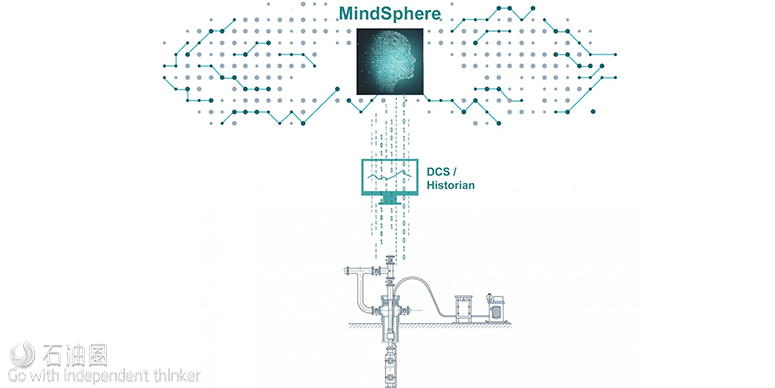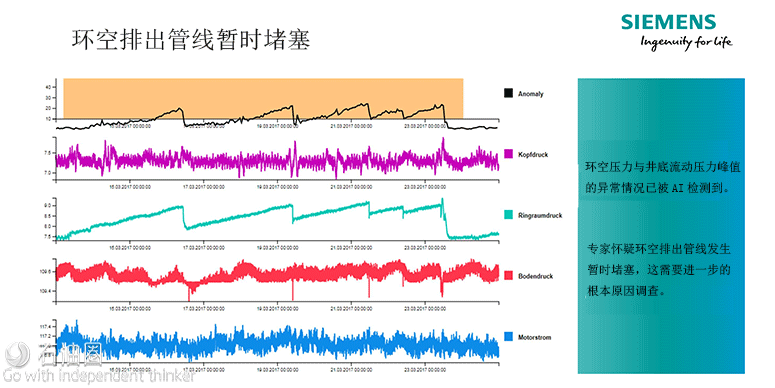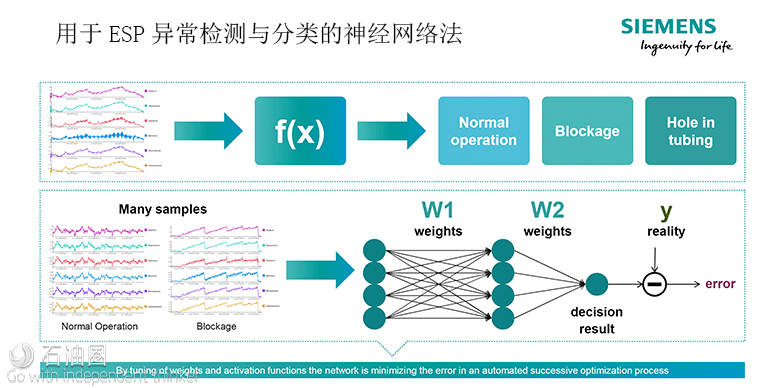Given that most oil and gas wells must go on artificial lift at some point during their production life cycles, and with electric submersible pumps (ESPs) being one of the most efficient ways of doing so, it is no surprise that most offshore wells use them to maximize output as much as possible.
But even though ESPs are designed, engineered and built for rugged reliability in the harsh conditions of corrosive seawater and extreme deepwater pressures, they can fail. And when they do, the costs to repair or replace them are extreme but usually dwarfed by the costs of lost production.
Actionable insights
Siemens developed a predictive maintenance solution called AI4ESP for remotely monitoring ESP performance by applying artificial intelligence (AI) technology. Compared to conventional approaches of ESP monitoring, AI-assisted monitoring can be transformational. That is because large amounts of data—many datapoints every second—can be processed with almost unlimited scalability. Taken together, all these data can provide a digital map of ESP operations, effectively creating smart pumps at the heart of a digital oil field. Because it is vendor-agnostic and standards-based, this concept provides coherent monitoring of all ESPs deployed in a field across multiple vendors’ equipment, eliminating the need to deal with difficult interface problems. It also can apply to all types of ESP applications, offshore or onshore. Although the system utilizes cloud-based technologies, the design of the solution is such that it also can be used with private clouds or on premise systems.
Successful field test
Recently, for an onshore E&P customer in Germany, Siemens conducted a successful test of a cloud-based, ESP monitoring solution that uses AI and Industrial Internet of Things (IIoT) connectivity. Siemens is planning a similar proof of concept for an offshore production platform with multiple ESPs.
Today an ESP’s sensing fabric draws from its automation and electrification systems, while its SCADA system logs data into historian databases, mostly used for troubleshooting or forensics. Although deviations can alert operators to performance issues, this now happens only after an event occurs—when a potential production impact may already be underway.
In contrast, the Siemens ESP predictive maintenance system brings together AI and cloud-based IIoT technology while ensuring sensitive production data remain highly secure. It uses an ESP’s streaming process data as fuel to build an ever-richer ESP operating profile in these three ways:
- Anomaly detection: As ESP data stream 24/7 from the wellsite into a cloud-based database, advanced analytics and AI algorithms seek variances from expected behaviors of various parameters. Deviations are flagged and alerts sent to operators before a performance event occurs. The graphical representation shows the different types of ESP data being processed. An anomaly in the data source as indicated can reveal a potential failure several days before the actual failure of the ESP mechanism.
- Behavior labeling: As data keep streaming into the database that holds the ESP’s ever-more precise operating model, machine learning occurs as the pattern recognition and statistical algorithms get smarter over time. Here, the Siemens Artificial Lift Suite software and the cloud model’s advantages kick in. Operating data from ESPs worldwide can be aggregated and analyzed to label ESP behavior profiles specific to their applications and environments. These not only can flag behavior anomalies in one ESP but also alert operators of ESPs in similar applications and environments, delivering even more advanced notice of an emerging issue.
- Predictive maintenance: Given the real-time feedback loop between an ESP and its cloud-based operating profile (i.e., its digital twin), ESP operators can deploy predictive maintenance models that use proactive condition monitoring to provide them with decision support about how to address impending issues. This can ensure greater ESP availability and uptime while saving spare parts and labor. Costly disruptions can be avoided.
AI’s potential is just starting, with many new applications expected in the future to help optimize asset utilization and lower production costs for greater profitability across the oil and gas industry. The ultimate goal of applying AI in the digital oil field is to improve decision support so ESP operators can know how to prevent production disruptions and use the intelligence from the advanced analytics to optimize reservoir production.

 石油圈
石油圈


